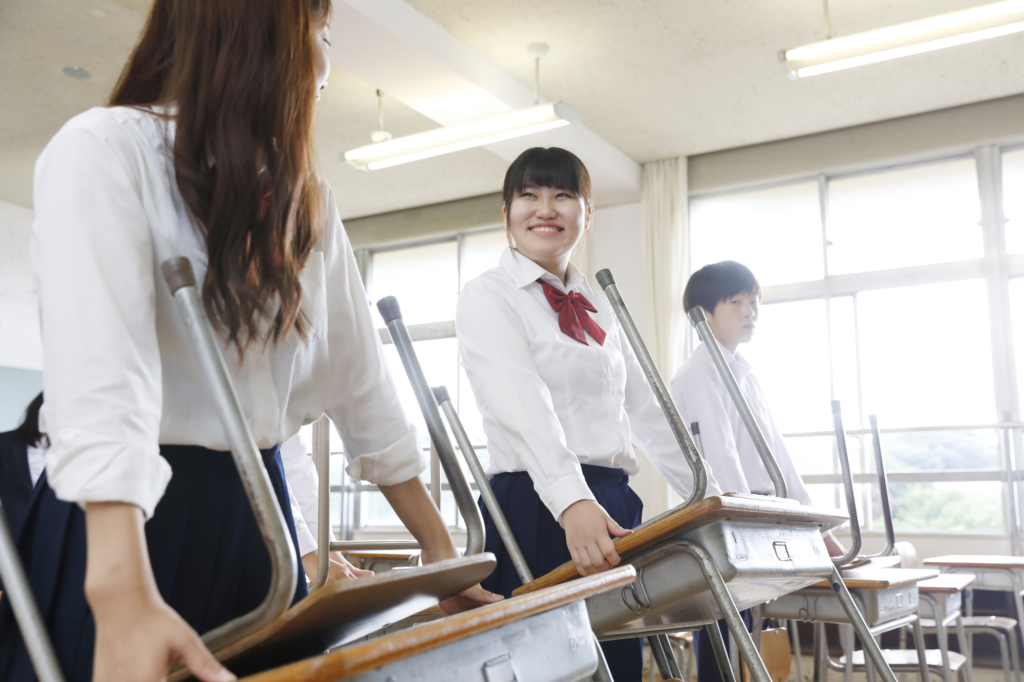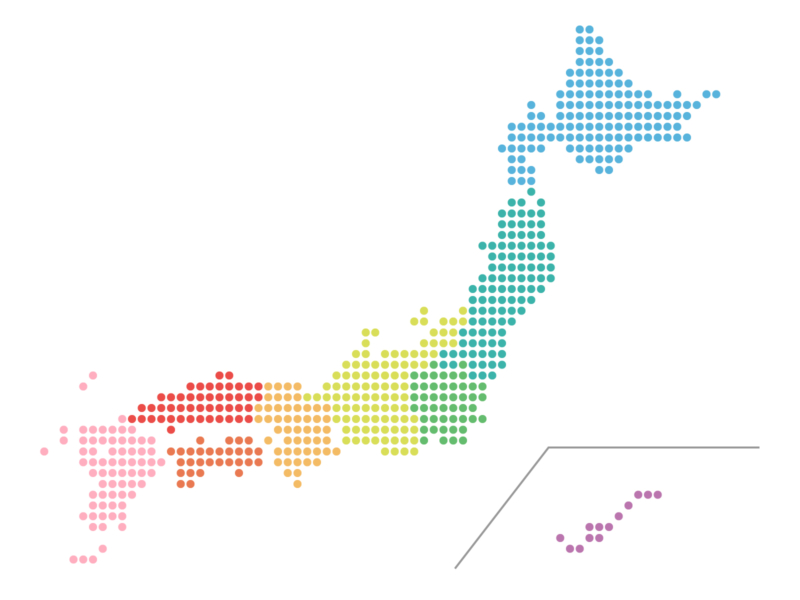A dialect is a variation of a common language that is only used in a particular region. You’ll find a lot of unique dialects in Japan, which is made up of many islands and covers a long distance from north to south. And it’s not unusual for the same Japanese word to mean completely different things in each of those regions. In this article, we’ll talk about some of those words and the best times to use them.
Where Do Dialects Come From?

We’re still not 100% sure how it happens, but there are two main theories on how dialects are born:
The first theory is based on the fact that, a long time ago, getting from one place to another was much harder than it is today, so it took a while for information to spread. For example, let’s imagine that a new word is invented in Tokyo, and then it spreads to surrounding regions and ultimately to Hokkaido in the north and Okinawa in the south. Today, this process happens very quickly because of rapid transportation and communication tools like television and the internet. This means a new word can quickly enter the Japanese lexicon.
However, if a new word was created in the past, then without the internet or fast transport, its means of transmission would be severely limited, leaving only word of mouth. This would slow down the process of a popularizing a new word considerably. As a result, it might take hundreds of years for it to spread all across the country, and by the time it gets to all the regions, the word might no longer be in use in Tokyo, having been replaced by a completely different word. Repeat that enough times, and you get regional linguistic differences where one place uses words and phrases that no longer exist in other parts of the country. Or, in other words: dialects.
The second theory proposes looking at different regions in the past as different “countries” that have come up with their own unique languages. Today, the remnants of those languages are what we refer to as dialects.
That’s Not What It Means Here! A Look at Japan’s Most Interesting Dialects
1) Hokkaido and Tohoku Regions
“Throwing” the Trash

In standard Japanese, the verb nageru (投げる) means “to throw,” as in propel something with a motion of the hand, but in the Hokkaido and Tohoku dialects, it means “to throw away” or “dispose of.” That’s why northern Japanese people don’t “suteru” (捨てる “throw away”) their trash; they “nageru” it.
Ex. このゴミなげておいて! Kono gomi nagete oite!
Literal meaning: Throw that trash!
Actual meaning: Throw that trash away!
Please don’t litter by “throwing” your trash.
Your Body is “Scared”

In standard Japanese, the adjective kowai (こわい) means “frightened”, “scared” or “scary,” but in the Hokkaido and Tohoku dialects, it means “tired” or “hard/stressful/unwell” (つらい). That’s why people up north don’t say they are “tsukareta” (疲れた “tired”), but rather that they are “kowai.”
Ex. 仕事が忙しかったから体がこわい Shigoto ga isogashikatta kara karada ga kowai.
Literal meaning: I feel scared because work has been so busy.
Actual meaning: I feel tired because work has been so busy.
Similarly, when you’re under the weather, you’d say “Nanka karada ga kowai” (lit. “I’m feeling a little scared”) when you want to say you’re unwell in the Hokkaido and Tohoku dialects. Incidentally, the word “kowai” means many different things in many Japanese dialects. In Osaka, for example, it means “katai” (硬い “hard”).
2) Chubu Region
Your Shoes Are “Gross”

In standard Japanese, the adjective kimoi (きもい) is an abbreviation of “kimochiwarui” (気持ち悪い “gross” or “disgusting”) used by young people, but in Aichi or Gifu Prefecture, it means “tight”, “cramped” or “narrow.” So instead of saying that your shoes are “kitsui” (きつい “tight”), people in the Chubu region would say that they are “kimoi.”
Ex. この洋服、少しきもいな~ Kono youfuku sukoshi kimoina…
Literal meaning: These clothes are a little gross…
Actual meaning: These clothes are a little tight…
So if you’re ever in the Chubu region and you want to say that your shoes, clothes, chair, or even the room are a bit too small, just say that they are “kimoi.”
“Teasing” A Friend Who Isn’t Feeling Well

In standard Japanese, the verb karakau (からかう) means “to tease” or “pull pranks on,” but in Yamanashi Prefecture, it means “to try everything.” So instead of saying that you “iroiro te wo tsukushita” (いろいろ手を尽くした “tried everything”) for a sick friend, you’d say you “karakatta” (“teased”) them.
Ex. 一生懸命からかって、やっと直した Isshoukenmei karakatte, yatto naoshita
Literal meaning: We teased them until they felt better.
Actual meaning: We did everything we could for them until they felt better.
“Karakau” can also be used to describe a situation where you fixed something through trial and error. So if you want to say that you gave it your all in Yamanashi, definitely use “karakau.”
3) Kinki Region
“Fixing” the Books

標準語で「なおす」は、「修理する」「治療する」という意味だが、関西では「片づける」という意味になる。つまり「本をなおす」は「本を片付ける」となる。
In standard Japanese, the verb naosu (なおす) means “to fix” or “to heal,” but in Kansai, it means “to tidy up” or “to put away.” So instead of saying you’ll “katazukeru” (片付ける ”tidy up/put away”) your books, you say you’ll “naosu” them.
Ex. 洗濯物をなおしておいて! Sentakumono wo naoshite oite!
Literal meaning: Fix (or heal) the laundry!
Actual meaning: Put the laundry away!
Incidentally, “naosu” also means “to tidy up or put away” in the Chugoku and Kyushu regions. Try it out if you’re ever there.
“Hanging” Your Desk

In standard Japanese, the verb tsuru (つる) means “to hang or suspend” something so it doesn’t fall down, but in Mie Prefecture for example, it means “to carry or transport.” So instead of saying you’d “hakobu” (運ぶ “carry or transport”) a desk, you’d say you’ll “tsuru” it.
Ex. この荷物をあそこまでつってください Kono nimotsu wo asoko made tsutte kudasai.
Literal meaning: Please hang these bags over there.
Actual meaning: Please carry these bags over there.
You’ll also find the same meaning of “tsuru” in Gifu and Aichi prefectures. So if you’re ever there and you need help carrying something, be sure to try it out.
4) Chugoku and Shikoku Regions
People Are “Burning”!

In standard Japanese, the verb moeru (もえる) means “to burn,” but in Tottori or Tokushima Prefecture, it means “increase or multiply.” So instead of saying that the number of people will “fueru” (増える “increase”), you’d say that it will “moeru.”
Ex. 気づいたら財布の中のお金が燃えていた Kizuitara saifu no nakano okane ga moeteita.
Literal meaning: Before I knew it, the money in my wallet burned up.
Actual meaning: Before I knew it, there was more money in my wallet.
“Moeru” can also mean “to become bigger” here, so “Hatake de sodateteita yasai ga moeta” (畑で育てていた野菜がもえた) literally translates to “The vegetables that I’m growing have burned up” but simply means that they’ve gotten bigger.
Your Stomach Is Standing Up

In standard Japanese, the verb okiru (おきる) means “to stand up” from a supine position but in Kagawa or Tokushima Prefecture, it means “to be full.” So instead of saying that you ate a lot and now your stomach is “ippai” (いっぱい “full”), you’d say that it “stands up” (“okiru”).
Ex. お腹がおきるものが食べたい Onaka ga okiru mono ga tabetai.
Literal meaning: I want to eat something that will make my stomach stand up.
Actual meaning: I want to eat something that will fill me up.
Feel free to use this expression before or after eating!
5) Kyushu and Okinawa Regions
Picking Out “Unpleasant” Clothes

In standard Japanese, the adjective iyarashii (いやらしい) means “unpleasant” or “vulgar,” but in Saga, it means “cute.” So instead of saying that your clothes are “kawaii” (可愛い “cute”), you’d say that they are “iyarashii.”
Ex. 今日の髪型、やらしかね~ Kyou no kamigata yarashikane! [another form of iyarashii].
Literal meaning: Your hair is so unpleasant today.
Actual meaning: Your hair is so cute today.
Because “iyarashii” means something totally different in standard Japanese, people are usually shocked when they hear it used as “cute.” But it’s actually a great compliment to be called or call someone “iyarashii” in Saga. So if you’re ever in Kyushu and want to praise something or someone as “cute,” go ahead and use “iyarashii.”
I Want to “Recite”!

In standard Japanese, the verb kataru (かたる) means “to chant or recite,” but in Fukuoka Prefecture, it means “to join others in something” or “to participate.” So instead of saying that you want to “nakama ni hairu” (仲間に入る “join a group”), you’d say you want to “kataru.”
Ex. 〇〇もゲームにかたる? 〇〇 mo gemu ni kataru?
Literal meaning: Do you want to chant with us in this game?
Actual meaning: Do you want to join us in this game?
Be sure to use “kataru” if you want to join in on the fun or invite a friend over in Kyushu.
“Let’s” Be Going Home

In standard Japanese, the “-mashou” ending of verbs means “let’s (do something).” It’s an invitation or proposal. But on Okinawa, it’s just a statement meaning “(I) do or will (do something).” So instead of saying “mou kaerimasu” (もう帰ります “I’m going home now”) you’d say “mou kaerimashoune.”
Ex. これ片づけましょう Kore katazukemashoune.
Literal meaning: Let’s tidy this up.
Actual meaning: I’ll tidy this up.
When first hearing this phrase, a lot of people confuse it for an invitation, but it’s actually just a statement announcing the speaker’s intent to do something. It’s not meant as an offer to do something together on Okinawa.
And that was our presentation of the most interesting dialects from all over Japan! If you ever get the chance to visit these places, try talking to some of the locals in their dialect. It’s sure to win you plenty of friends!
If you want to give feedback on any of our articles, you have an idea that you’d really like to see come to life, or you just have a question on Japan, hit us up on our Facebook!
The information in this article is accurate at the time of publication.

